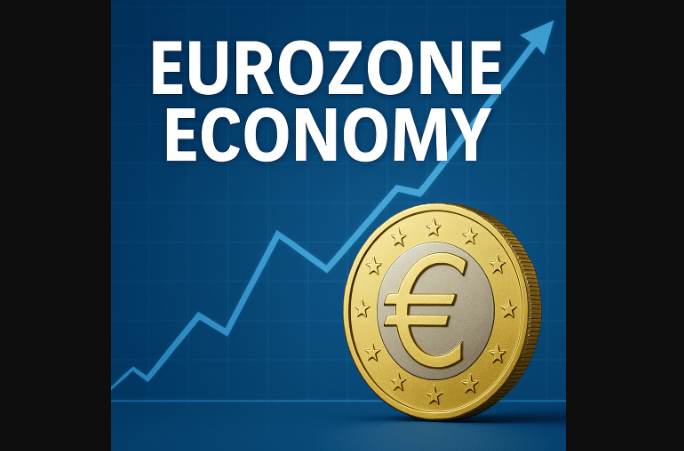The eurozone economy recorded an unexpected surge in early 2025, with exporters hustling to get goods shipped before new US tariffs took hold.
According to fresh data from Eurostat, gross domestic product (GDP) for the eurozone expanded by 0.4% in the first quarter, double what most analysts had anticipated. This marks a notable rebound and places the bloc ahead of the broader European Union, which saw a more modest 0.3% rise.
Eurozone Outpaces EU Growth
This growth reversal was striking. Typically, the EU as a whole—buoyed by faster-growing Eastern European nations—tends to outperform the eurozone. Not this time. Outside the eurozone, Sweden’s economy flatlined while Hungary saw a small contraction of 0.2%.
Within the eurozone, Spain emerged as the clear standout.
- Spain: +0.6%
- Italy: +0.3%
- Germany: +0.2%
- France: +0.1%
Germany and France, the bloc’s economic heavyweights, continued to trail, raising concerns about their resilience in the face of global uncertainty.
Tariffs Prompt Pre-Emptive Export Push
The data reflects activity up to 31 March, just days before the US President Donald Trump’s tariff package was unveiled on 2 April. Although the full impact of the tariffs hadn’t yet filtered through, businesses were already responding. Exporters, especially in manufacturing-heavy economies, ramped up shipments in anticipation.
“Trade-heavy economies likely saw a short-term lift as firms rushed to beat the tariff deadline,” noted ING’s global head of macro, Carsten Brzeski. However, he warned against seeing this as a signal that Germany’s sluggish trend had reversed.

Short-Term Gains, Long-Term Risks
Pantheon Macroeconomics’ Melanie Debono echoed that sentiment, saying the figures might temporarily reassure the European Central Bank (ECB).
“The data will help reassure the ECB that the eurozone economy was in reasonably good shape as it entered a period of heightened trade tension,” she said.
Still, Debono predicted a pullback in the coming months. “As the recent surge in trade policy uncertainty hits investment, offsetting some of the boost to goods exports from tariff front-running.”
IMF Downgrades Forecast
Despite the strong start, the International Monetary Fund (IMF) has trimmed its eurozone growth forecast for 2025, now expecting just 0.8%, down 0.2 percentage points. The IMF cited broader global slowdown pressures driven by the unfolding trade war.
ECB Stays Calm
The ECB’s chief economist, Philip Lane, offered a measured response. “It’s still a growing economy,” he said. “We’ve inflation risks, I think, to the downside, but we don’t need to be too dramatic about it.” For now, the central bank sees little reason to sound the recession alarm.
Financial markets showed little panic. The euro dipped slightly, down 0.2%, trading just below $1.14 after gaining nearly 10% against the dollar earlier this year.
The eurozone may have pulled off a surprising early-year rebound, but storm clouds linger. Much of the recent growth appears to have been driven by exporters scrambling to get ahead of new US trade barriers.
The second quarter could look very different, as trade tensions bite and investment slows. While the ECB remains composed, and recession fears are being kept in check for now, the economic outlook remains delicately balanced.






